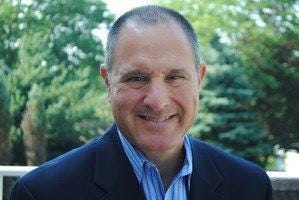
In the aftermath of the horrific slaughter of patrons at an LGBT club in Orlando — the worst mass shooting in American history — we have learned that the homicide rate in major cities across the country also rose dramatically in 2015.
The homicide increase in the nation’s big cities in 2015 “was real and nearly unprecedented,” according to a newly released National Institute of Justice report.
The report’s author, criminologist Richard Rosenfeld of the University of Missouri-St. Louis, said “homicide rates in a sample of 56 large U.S. cities rose by an average of 16.8 percent last year over 2014.”
This is not just a big-city problem. Last year, The Atlantic reported that guns now kill more people under age 26 than automobile accidents. Couple that with the 353 mass shootings in the United States in 2015 — depending on the definition you use — and the crisis comes into focus.
According to the Dallas Morning News, using any definition, the likelihood of being caught in a mass shooting is exceedingly rare — but getting shot is not as rare as one might think. Each year in the United States, more than 32,000 people are killed, and more than 67,000 are injured by firearms.
As a result of Orlando’s catastrophic event and these alarming statistics, the American Medical Association has called gun violence a “public health crisis” and urged that Congress fund research into gun violence.
The AMA said this week it will press Congress to overturn 20-year-old legislation that blocks the Centers for Disease Control and Prevention from conducting research on gun violence.
That lack of research is attributed to language in a 1996 appropriations bill that the CDC, lawmakers, and the media interpret as blocking the agency from research on firearm deaths and injuries. Some suggest that while Congress put constraints on the CDC, it did not ban the study of gun violence. Instead, they say, senior CDC brass made the choice to restrict gun research, rather than risk political retribution. Whatever the reason, research is lacking and people are dying as a result.
Dr. Steven Stack, AMA president, told Reuters, “Even as America faces a crisis unrivaled in any other developed country … Congress prohibits the CDC from conducting the very research that would help us understand the problems associated with gun violence and determine how to reduce the high rate of firearm-related deaths and injuries.”
Why should every American be concerned about gun violence?
There is a real and growing problem with gun violence in this country. Ten big cities produced two-thirds of the homicide increase in 2015; they also experienced a far larger percentage increase than the 56-city sample. The percentage increases in the top 10 ranged from a frightening 90.5 percent increase in murders in Cleveland to a more modest, yet alarming, 12.9 percent in Philadelphia.
The average homicide increase over 2014 in the top 10 was 33.3 percent, compared with a 16.8 percent rise for the sample as a whole.
According to the report, one-year increases of this magnitude in the nation’s large cities, although not unknown, are very rare.
The increase in 2015 was greater than 95 percent of the yearly increases these cities had experienced during the previous three decades. The report suggests that these increases, “If not unprecedented … certainly (deserve) further scrutiny.”
The AMA’s Stack sounded the alarm: “With approximately 30,000 men, women and children dying each year at the barrel of a gun in elementary schools, movie theaters, workplaces, houses of worship and on live television, the United States faces a public health crisis of gun violence.”
Matthew T. Mangino is of counsel with Luxenberg, Garbett, Kelly & George P.C.
You can reach him at mattmangino.com and follow him on Twitter, @MatthewTMangino.
This article originally appeared on Crestview News Bulletin: MANGINO: America faces ‘public health crisis of gun violence’
